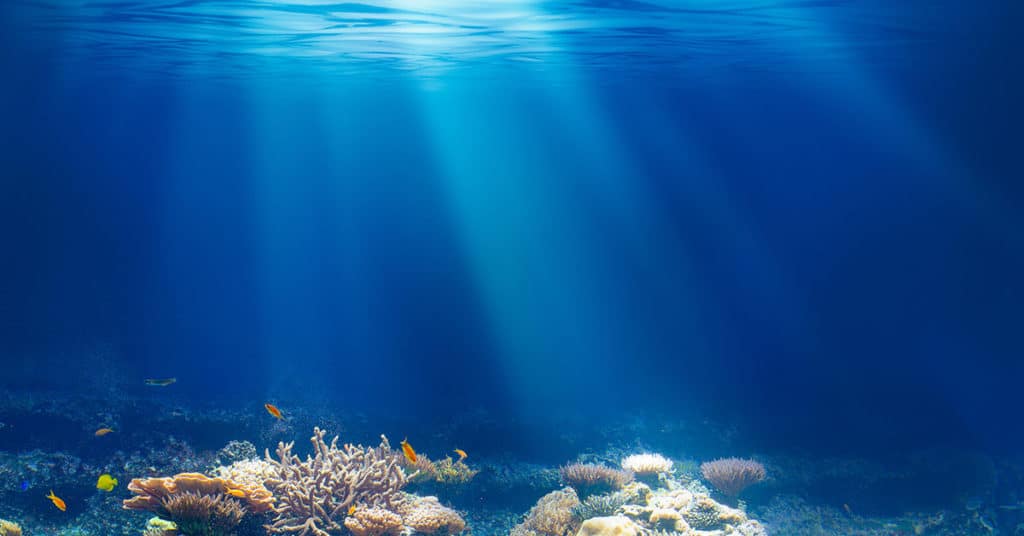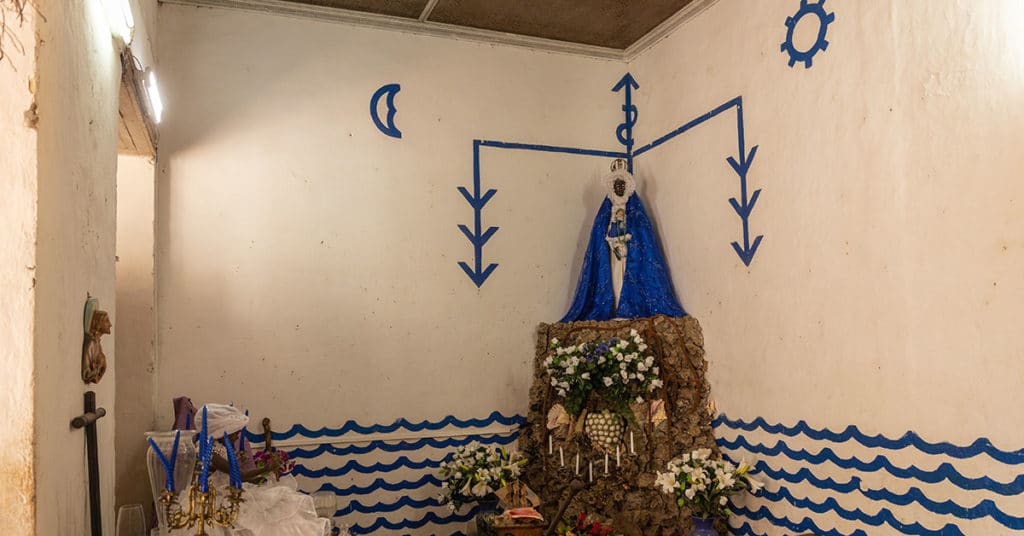Yemayá is the Yoruba orisha of motherhood and the sea. She is often represented as a mermaid, but is not just a mermaid. She is the great mother of us all and represents Mother Earth, the life giver. As the patron of women, she is associated with the moon which has a powerful influence on women.
The Mother of the Fish

In the Yoruba language, Yemayá’s name means “mother of the fish.” The association with the sea is incredibly astute. Amniotic fluid, which we are all born in, is basically sea water. One of the stories is that Yemayá’s own water broke over the primordial Earth. From this, the rivers, seas, and life itself began.
European context is irrelevant, but if it helps you understand, Yemayá is the Virgin Mary (not a saint, the one Virgin).
Her character is that of a mature woman. She is one of the Seven African Powers (Las Siete Potencias Africanas) and is very loved. After all, when hurt, who do you turn to for comfort? Mother, of course.
Yemayá rules the surface waters of the sea. Olokun rules the deep sea. In some traditions, they are husband and wife. In others, they are the feminine and masculine aspects of the same orisha.
In Yorubaland, Yemayá rules the Ogun River. She rules fresh water, but after the Middle Passage she is associated with the sea, and Olokun who absorbed our loses in the deeps. We used to think the deep sea was a dead zone, but it is filled with life, some that we find difficult to understand. It is part of the endless cycle of life, the water cycle.
Celebrating Yemayá
The orishas are part of a rich oral tradition, so traditions vary by region, community and even by family. In the Spanish-speaking world, we know her through the Cuban traditions, but Haiti, Brazil and many other places in the Americas have their own celebrations. They are all unique, but share common roots.
For example, in Nigeria, Yemayá is often associated with fresh water. In the Americas, she became associated with the sea because the journey from Africa crossed the sea.
In the Americas, the Orisha faiths are syncretized or blended with Catholicism. Catholic shrines in Caribbean communities are often really dedicated to the orishas. There is an entire parallel universe if you know how to read the signs.
In Cuba, Dominican Republic and Puerto Rico, we honor Yemayá on September 7. In Havana, Cuba, there is a famous procession of Our Lady of Regla who is basically a Catholic Yemayá.
Interestingly, we honor Yemayá, the mother figure on September 7 and Oshun, the young woman figure on September 8. In some traditions, they are mother/daughter, in others they are sisters. But between the two of them, you have the complete woman.
Symbols of Yemayá

She is associated with the number 7. Her colors are blue and white. Saturday is her day.
She adorns herself with things from the sea like seashells, sea stones, nets and so on.
We offer her watermelon, molasses, coconut. If you see white roses or flowers floating in the sea, that’s an offering to Yemayá.
Un Encuentro
Editor Iroko Kiko Keith
Yemayá is in my life. I encountered her on the beach in Santurce, Puerto Rico in 2020 on September 7. I was doing my morning walk (1 mile door to door) and felt the need to keep walking off the sea wall onto the beach which I don’t usually do.
When I got to the end of the beach, I found some doves and a pile of fruit with white roses. Realizing it was an offering, I remembered it was Yemayá’s day. The people throw white roses into the sea on her day.
I walked back and ordered something from the chinchorro (beach restaurant). While I was waiting, a white rose washed up on the beach right in front of me. It looked like the white roses at the end of the beach. I wondered at how strange that was. It was like she was following me around. When I looked up again, the white rose was gone.
Yemayá Kept Me in Puerto Rico
Editor Iroko Kiko Keith
This reminds me of how Yemayá kept me in Puerto Rico. I was introduced to her by a famous Cuban actress on my last day in New York City, before leaving for the Caribbean.
I was fascinated because I recognized some of Yemayá’s character in me. The creative part of a man is his anima, his female aspect, and I am very creative.
In my first week on the island, I negotiated a good deal on an apartment with an ocean view. To decide whether to stay or keep traveling, I asked Yemayá directly, “¿Yemayá, esperando aqui?” (Should I stay here?).
Since she is the orisha of the sea, I walked to the beach to receive her answer. I started running across the sand, thinking to myself that I wanted to get strong again like when I was a kid. The second I touched the ocean, I felt a great pain in my leg and collapsed. I had the sensation that a deep sea creature bit my leg off. (Now I would say that was Olokun. I have found Yoruba stories that ask Olokun not to take our legs away on the beach.)
I crawled out of the water and some guys carried me off the sand. I could barely walk. I thought I had a bad cramp, but had actually torn my Achilles tendon. There is more to this story, but basically I ended up in a no-walk cast. It was almost a year before I could walk again.
I interpreted Yemayá’s answer as a sign not to stay. I got a place in Old San Juan where I met the Puerto Rican family that adopted me, took care of me while I couldn’t walk, and introduced me to Puerto Rico’s rich family culture.
But my initial interpretation was wrong. Yemayá didn’t tell me to leave. She forced me to stay. Even though the injury hurt a lot and shut me down for a quite a while, she granted my wish and made me stop to receive the island’s blessings.
I have gotten healthy again and become Boricua de corazón (Puerto Rican of the heart). If you’ve been reading New York Latin Culture Magazine for a while, you may have noticed that the writing is much deeper. It’s partly because of what I have learned since Yemayá embraced me.
It’s all a bit strange because I wasn’t raised in Yoruba tradition, and the week before my injury, I didn’t even know who Yemayá was. But she gave me one of the greatest blessings of my life. Crawling out of the ocean that day, I was born as a Caribeño by the great mother of the sea.
Maferefún Yemayá.
